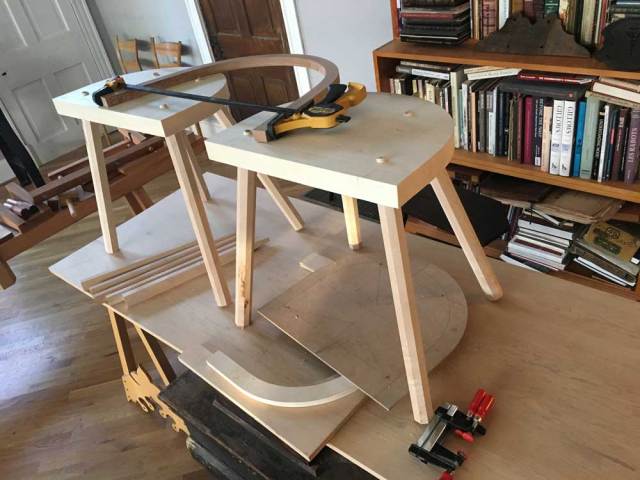This is an excerpt from “From Truths to Tools” by George Walker and Jim Tolpin; Illustrated by Andrea Love.
Just out of curiosity, let’s see what happens when we draw a circle, then switch the dividers’ legs around. Being sure to keep the same setting (i.e. the radius of the first circle), we set the point anywhere on the rim and swing the other leg around to construct a second circle.
We now have before us two circles of the same size, which yields the birth of “symmetria” (symmetry) – one of the most useful and foundational principles in geometry (not to mention keeping the universe itself intact).
The intersection of the symmetrical circles at each other’s focal points is the geometric truth underlying a powerful layout tool called a spiling batten. To see how this wool works, follow the steps in the drawing.
1.) Swing an arc (about one-third of a circle) from a focal point.
2.) Keeping the same radius. swing back a little arc from any place on the first arc.
3.) Swing back another arc from a second point on the first arc. The intersection of these two small arcs is the location of the original focal point.
Be aware that you need to be careful to maintain the same setting for all these arcs.
A common application of spiling in boatbuilding is in the fitting of a boat plank perfectly between two other previously installed planks. We begin by tacking in place a thin piece of wood (the spiling batten) in the opening between the planks. Next, from station points we’ve made on the upper and lower planks (usually at the centerline of frame locations) we swing an arc onto the batten.
To avoid errors due to a change in the divider setting, we will record the divider span somewhere on the the batten to provide a double-check.
When we are done making arcs from all the station points, we remove the batten and lay it on the stock to be cut to shape. Then we swing two arcs from each arc drawn on the batten.
The intersection of these arcs will be the location of the original station point. Finally, we’ll use a bendable length of wood to connect the transferred station points onto the stock. Cut to the line and we are rewarded with a ready-to-plane-to-perfect fit.
— Meghan B.











